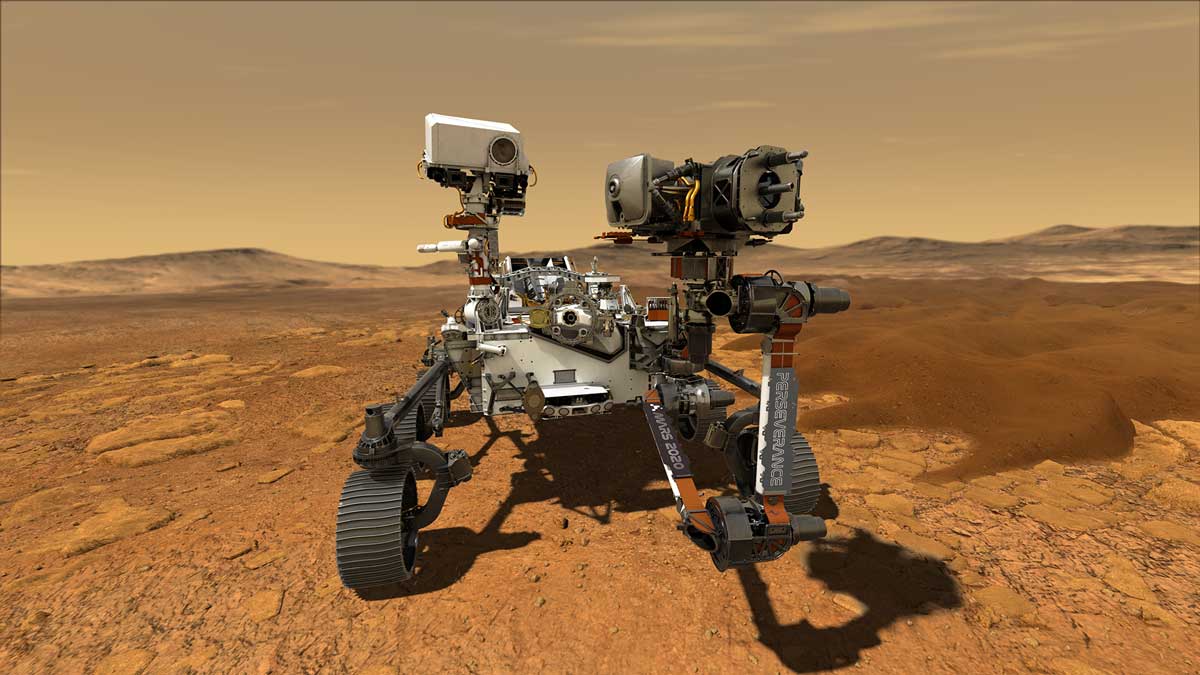Mars 2020 Perseverance Rover - NASA Mars
Mars 2020 Perseverance Rover - NASA Mars
The Perseverance rover is targeted to hunt for evidence of ancient life and also it will cache samples for possible future return to Earth.
A concept image showing NASA's Perseverance rover on Mars' Surface. (Image credit: NASA/JPL-Caltech)
Like its predecessor, the Percy rover was built by scientists and engineers at NASA's JPL Laboratory in Pasadena, California. As per NASA, around 85% weight of Perseverance is based on heritage hardware of Curiosity which has in returned saved time and money and helped the engineer to decrease the chance of risk considerably.
Perseverance is about 10 feet long, excluding its robotic arm, 7 feet tall, and 9 feet wide (about 2.7 meters wide, 3 meters long, and 2.2 meters tall). At 1,025 kilograms (2,260 lbs.), Perseverance weighs is around the weight of a compact car.
Like Curiosity, it has a six wheels on a rectangular body along with a robotic arm, cameras, a drill for sampling rocks, and many scientific instruments which will be performing mind blowing test and discoveries. However, even though Precy is very much alike the Curiosity, but still the instruments which it has are very much different than the hardware aboard Curiosity, because these two rovers have divergent goals. The main task for Curiosity task involves assessing the habitability of ancient Mars, however Percy will hunt for sign of ancient Martians.
As per NASA's Perseverance program executive, George Tahi, Perseverance's seven instruments will gather science data in ways that weren't possible before.
Perseverance also used the same EDL (entry, descent, and landing) strategy as Curiosity does, and both rovers had very high velocity when they hit the Mars atmosphere, and when friction slowed them dowm, they deployed a supersonic parachute, and were finally lowered gently with the help of Sky Crane, to the red dirt.
However, Perseverance had some Entry, Descent, and Landing upgrades which Curiosity didn’t enjoy. For example, NASA's JPL in Southern California, which manages the 2020 mission, developed completely novel landing technology known as terrain-relative navigation which means that when the rover descended through the Martian skies, it used a computer guided landing system which is designed to compare the landscape with pre-loaded maps, and assisted itself in selecting a safe landing site and making corrections while it was making its way down.
Another brand new feature, range trigger, used velocity and location information to determine the exact time where the supersonic parachute has to be open, narrowing the landing ellipse by more than 50%.

Comments
Post a Comment